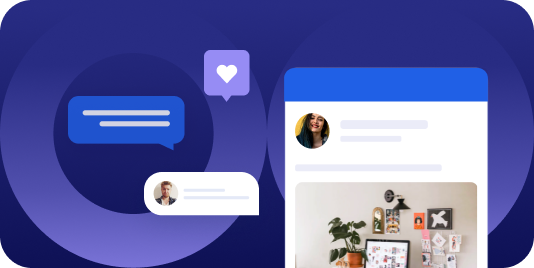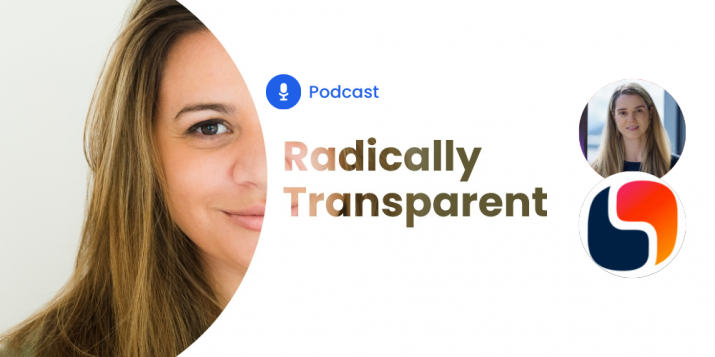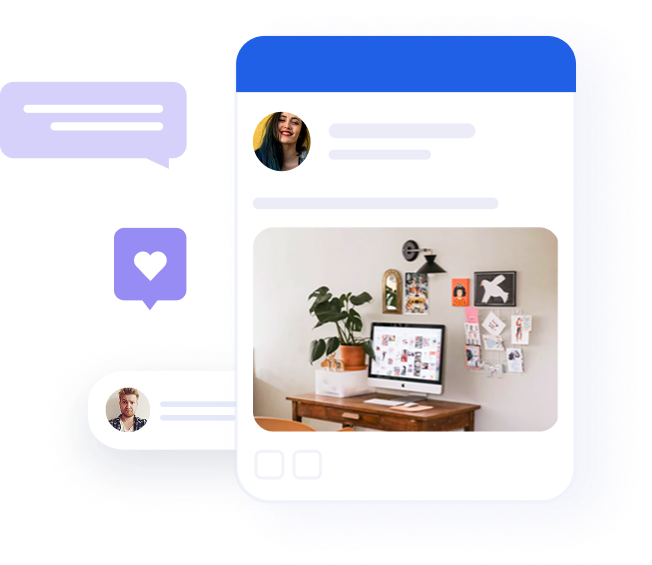
How internal employer branding helps you retain employees
Table of contents
Every business is unique, but they all share one common goal: to attract and retain the best employees who can make the greatest possible contribution to the company. Candidates compete for the same jobs, while businesses compete for a common pool of talent that could help them generate a competitive advantage.
Just as workers need to develop their personal brand, companies need to find ways to cultivate a strong employer brand strategy. In this article, we’ll cover the key elements of a good employer brand and explain how employer branding will help you bring in top talent while minimizing turnover.
Does employer branding really matter?
When it comes to filling open positions, you might think that the key elements are the salary and benefits. However, employees are increasingly concerned with the reputations of the companies they choose to work for. Even if you’re a relatively small business, you need to think about how your brand is perceived by potential workers.
Not only that, but employer branding helps you retain employees as well. In fact, managing your employer brand can reduce company turnover by as much as 28%.
In 2022, too many brands think that their customer-facing brand is enough. The truth is that you need to invest in an employer brand, just as you need to brand your products and services. It takes time to develop a strong employer brand, but the investment will pay off in terms of turnaround, hiring speed, and organizational talent.
What are employees looking for?
Employer branding is all about catering to the desires and preferences of both current and potential employees. With that in mind, you can’t develop a strong brand until you fully understand what they’re looking for in an employer.
1. Work flexibility
Flexible schedules and work arrangements have always been attractive, but they’ve become much more important during the COVID-19 pandemic. In fact, 74 percent of professionals expect remote work to become the standard, and just 3 percent of employees say they want to work in the office full-time.
Naturally, some jobs are more conducive to working from home than others. The critical point is to understand that employees don’t want to be forced to come to the office just to satisfy corporate requirements. If their job can be done equally well in a remote or hybrid work environment, you should do your best to accommodate that desire.
2. Career and Personal Advancement
When employees feel like their job is nothing more than a transaction, they’re unlikely to be fully motivated or engaged. As an employer, it’s your responsibility to give your team the opportunity to achieve their individual goals through their work for your company. This includes both their professional aims as well as their general skills and knowledge.
To align both personal and organizational goals, the Harvard Business Review recommends scheduling one-on-one meetings with your team members. Give them a chance to speak up about their experience at work and how their job is helping them grow as individuals and employees.
Remember that these meetings should include two-way communication — you don’t want them to feel like a performance review. Employees should feel like they can tell you about their real thoughts and feelings without risking judgment or professional consequences.
In this kind of meeting, you’ll have the opportunity to explore those issues and find ways to add to their responsibilities that align with their short- and long-term career and professional development goals.
In the end, your employees are more likely to stick with you if they feel like you’re helping them move toward their own goals. While every situation is different, pigeonholing each employee into a narrowly defined role can end up pushing them away from your brand.
3. Work culture
Work culture is related to both flexibility and personal goals, but it’s more connected to the work environment as a whole. People want to feel like they’re working with people and concerns they care about. If your team feels more like a group of people who happen to work in the same office, you’ve most likely failed to develop a compelling company culture.
Prospective employees can often see the impact of your work culture before they join the company. Interviewing each candidate by simply reciting a list of questions will be less engaging than running more dynamic interviews that allow each candidate to fully showcase their strengths. Similarly, being late for an interview or letting it run overtime are clear signs that a company doesn’t care about the candidate’s experience.
Your work culture also includes things like charity events, community outreach, and speaking up on social issues. This is particularly important for companies that want to appeal to younger candidates. In fact, more than half of millennials and gen-Z workers have made work-related decisions based on personal ethics in the last two years.
Recommended for further reading
3 Employer branding examples for inspiration
For those of us building an employer brand centered around employee retention strategies, it can be good to look at how other companies are using social media to build their employer brands. Here are a few brands that are nailing their employer branding on social.
1. Spotify
Some of the most effective employer branding content focuses on the achievements or personal growth of individual team members. Take a look at this LinkedIn post from Spotify. They highlight the issues Chadwick cares about and show that she doesn’t have to choose between working at Spotify and supporting her own values.

If you fail to give your employees the opportunity to pursue their own goals, they’ll start to look for another employer who can give them that chance. Of course, aligning your goals with those of your employees will also help them become more productive and make a positive impact on the business as a whole.
2. PetSmart
While Spotify’s post left space for an employee’s personal values, this post from PetSmart is more focused on the experience at work. PetSmart’s brand is all about forming positive relationships between pets, pet owners, employees, and the company itself.

Working with pets is supposed to be fun, and this post shows that PetSmart employees don’t have to choose between their job and having a good time.
This is a good example of the relationship between internal practices and your external image. A successful employer brand requires both elements, and you won’t be able to improve retention simply by posting on LinkedIn. Your image will help you attract employees, but you need to live up to their expectations in order to keep them onboard.
3. Microsoft
The third example from Microsoft shares some similarities with the posts from Spotify and PetSmart, but it’s the only one of the three to integrate video. Most readers would rather watch a three-minute video than read a text paragraph with multiple posts. The video format also gives the speaker the opportunity to inject their own personality in a way that isn’t possible through text.

One key theme through all three posts is that employees can be successful while fulfilling their own values and goals. This idea will continue to become even more important in the future as younger employees make up a greater and greater percentage of the workforce.
According to a 2021 Gallup poll, employees from the Gen X and Baby Boomer generations agree that ethical leadership is the most important thing they look for in an employer. On the other hand, both millennials and Gen Z workers tend to say that “the organization cares about employees’ wellbeing” is their top concern.
The 3 best strategies to retain employees
Develop a candidate persona
If HR and recruitment is becoming more and more like marketing, perhaps it’s time to take a page from marketing’s playbook. In marketing, we create a buyer or customer persona to put a face to our potential customer’s ideal profile.
You may not be able to do this for all roles, but you could probably create one per department. Potential candidates might share some key characteristics, core values, and desired benefits. Complete it with their job aspirations and your unique employer value proposition.
For example, “Job candidates want to work at [brand] because they want to do [X], and care about [Y]. They want to work for us because we offer [Z].”
Finally, be sure to communicate your unique employer value proposition on your careers page. Your employer brand awareness will never grow unless you get it in front of potential customers’ eyes.
Take a hard look at your benefits
Chances are, if your benefits have stayed the same for over five years, it might be time for a revamp. Improved employee retention is achieved by addressing and fixing issues that currently exist in your company.
Here are a few quick tips to improve benefits and company culture:
- Perform an eNPS: an employer net promoter score tells you how many of your employees would recommend working for you to a friend or colleague. It’s simple, low-commitment, and allows you to gather anonymous feedback.
- Poll employees for desired benefits: You don’t need to implement everything. A 4-day work week might work well for some companies and end in disaster for others. But if you try to implement popular ideas that make sense, you can make your employees feel heard and valued.
- Reevaluate existing benefits: Do you have enough benefits for long-term employees? If your benefits end after two years, what reason do your employees have for sticking around? Think about what long-term benefits you offer, and whether or not you need to add more.
Transform your employees into brand ambassadors
When it comes to recruiting and retaining capable employees, nothing will be a more powerful strategy than employee advocacy. Job seekers will take what a corporate account with a grain of salt, but when that employer brand comes from employees themselves, it resonates a lot more.
Some of the most powerful employer branding posts come from current employees: shouting out gifts they receive from the company, sharing photos of meetups, and talking about real-life work experiences. These are powerful vectors for what it’s really like to work for you.
Final thoughts
If you want to build a talent advantage over your competition, you need to attract the top talent and then keep them engaged at your brand. While many brands focus on the recruiting and hiring workflow, talent acquisition is at least as important. Minimizing turnover will help you maintain a strong culture while avoiding the costs associated with filling vacant positions.
With these tips, you’re ready to start building an employer brand that represents your company and helps you optimize talent retention. Over time, you’ll notice that a stronger employer brand leads to more interest and engagement from the best employees in your field.



